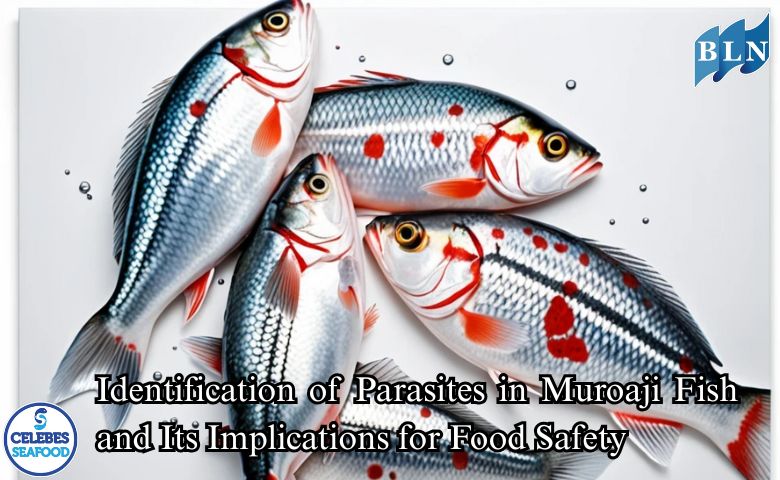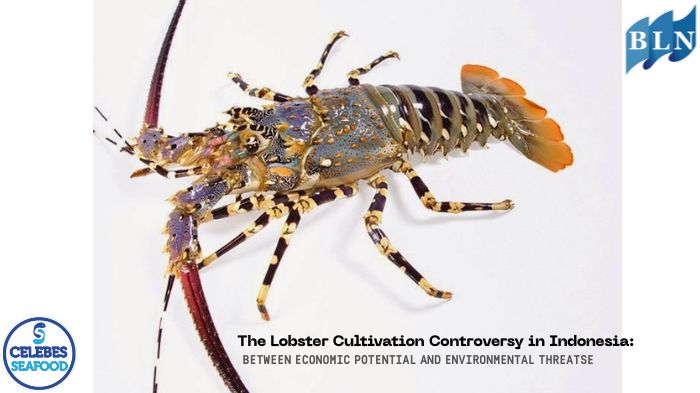Identification of Parasites in Muroaji Fish and Its Implications for Food Safety
By. Alfian - 24 Jul 2025
lautnusantara.com The yellowtail scad (or yellowtail scad, Selaroides leptolepis) is a popular fishery commodity. However, like many other fish, the yellowtail scad can also be infected with parasites. Identifying parasites in this fish is important to understand their potential impact on the fish's health, as well as their implications for food safety for humans who consume them.
Identifying Parasite Types in Yellowtail scad
Various studies have identified several types of parasites that can infect yellowtail scad, both internally and externally. Some of the most commonly found parasites include:
- Nematodes (Roundworms): One type of nematode frequently found is Anisakis sp. Anisakis sp. larvae can be found in various fish organs, including the abdominal cavity, intestines, pyloric cavity, stomach, and sometimes also in the muscles. These larvae are motile (able to move) while still in the fish's body.
- Trematodes (Flatworms): Several types of trematodes from the Digenea group can also be found in yellowtail scad, both in the intestines and gills.
- Cestoda (Tapeworms): Although not specifically mentioned as being dominant in muroaji in available sources, tapeworms are also a common type of parasite in fish.
- Acanthocephala (Spiny Worms): This type of worm has a spiny head (proboscis) used to attach to the host's intestines. Acanthocephala have also been identified in mackerel (a relative of muroaji) and are potentially present in muroaji.
- Isopods: Although more commonly found as ectoparasites (external parasites) on the gills or oral cavity of other fish such as the striped scad (Selar crumenophthalmus), isopod infestations also require attention in muroaji as they can cause gill lesions.
The distribution of these parasites can vary depending on fishing location, season, and aquatic environmental conditions.
Implications for Food Safety
The presence of parasites in muroaji fish has several important implications for food safety:
1. Risk of Human Infection (Zoonosis):
Certain parasites, particularly nematode larvae such as Anisakis sp., are zoonotic, meaning they can be transmitted to humans. If infected fish is consumed raw or undercooked, these larvae can migrate to the human digestive tract. Anisakis sp. infection in humans is known as anisakiasis, which can cause symptoms such as severe abdominal pain, nausea, vomiting, and diarrhea. In more serious cases, the larvae can burrow into the intestinal wall, triggering a local immune response or inflammation.
2. Decreased Fish Meat Quality:While rarely causing significant visible meat damage in live fish, severe parasite infestations can affect the physiological condition of fish. Severely infected fish may become thinner, lethargic, or have a weakened immune system. This can indirectly affect the nutritional quality of the meat or its shelf life.
3. Consumer Anxiety and Reduced Resale Value:
The appearance of parasites, especially those clearly visible in fish meat or organs, can cause concern and anxiety among consumers. This can reduce purchasing interest and negatively impact the resale value of fish products, even if the parasites are not harmful to humans after cooking.
Risk Prevention and Mitigation
To minimize food safety risks related to parasites in muroaji fish and other fish species, several important steps can be taken:
- Complete Cooking: This is the most effective method for killing most parasites and pathogens. Cooking fish to an internal temperature of 63°C (145°F) or until the flesh is completely cooked and opaque will kill any parasitic worms.
- Freezing: For raw or undercooked consumption (such as sushi or sashimi), fish must be frozen at very low temperatures (e.g., -20°C for 7 days, or -35°C for 15 hours) to kill parasites.
- Visual Inspection: Fishermen and fish traders are advised to visually inspect fish, particularly the gills, abdominal cavity, and flesh surface, to detect visible parasites.
- Sanitation and Hygiene: Maintaining cleanliness during fish handling (from catching, transporting, storing, and processing) can prevent cross-contamination.
- Consumer Education: It is important to educate the public about the importance of proper fish handling and the risks of consuming raw or undercooked fish that has not been prepared according to food safety standards.
By implementing proper handling and processing practices, the risk of parasites in muroaji fish can be minimized, ensuring that this fish remains a safe and nutritious source of protein.
If you are interested in our Redfin Emperor Fillet Skin On, Robinson Sea Bream Fillet Skin On please do not hesitate to contact us through email and/or whatsapp.








